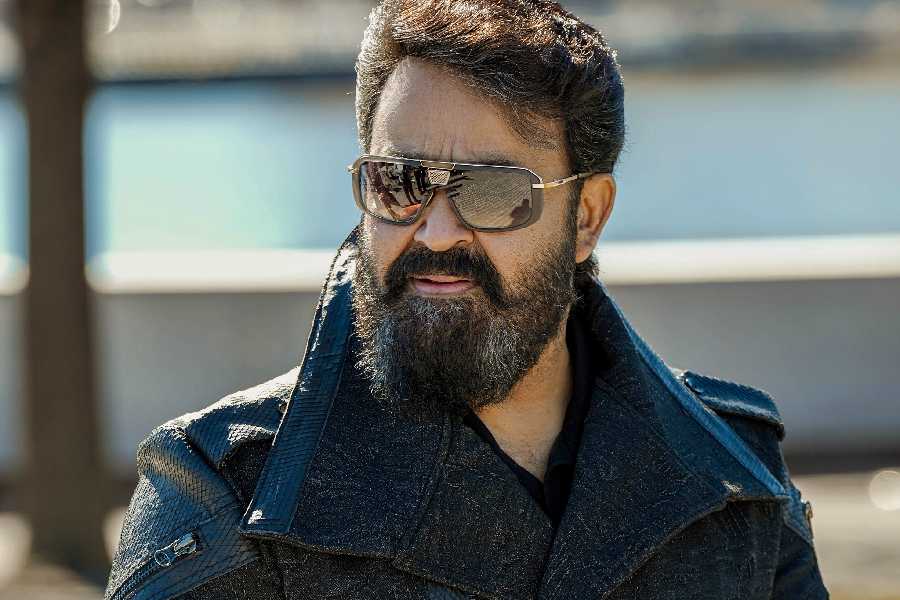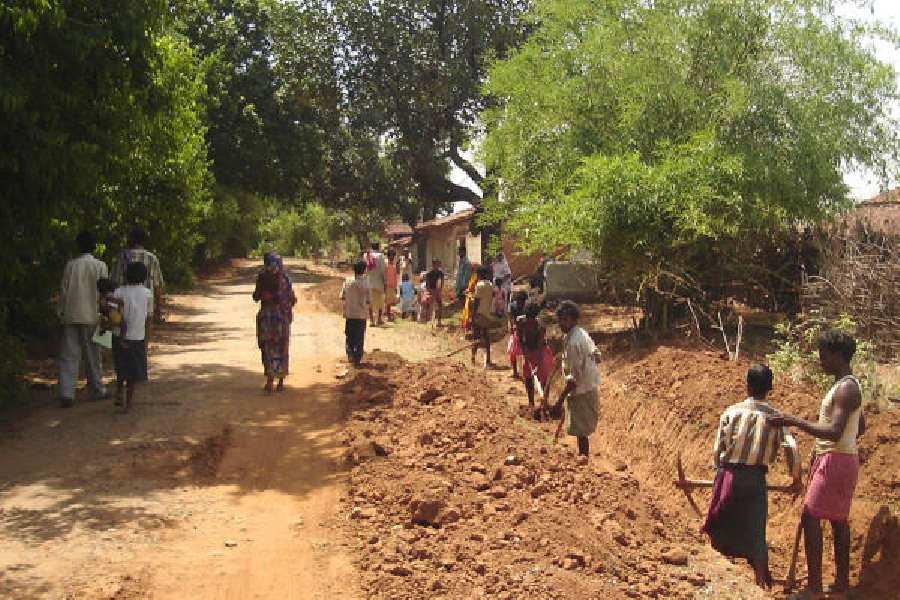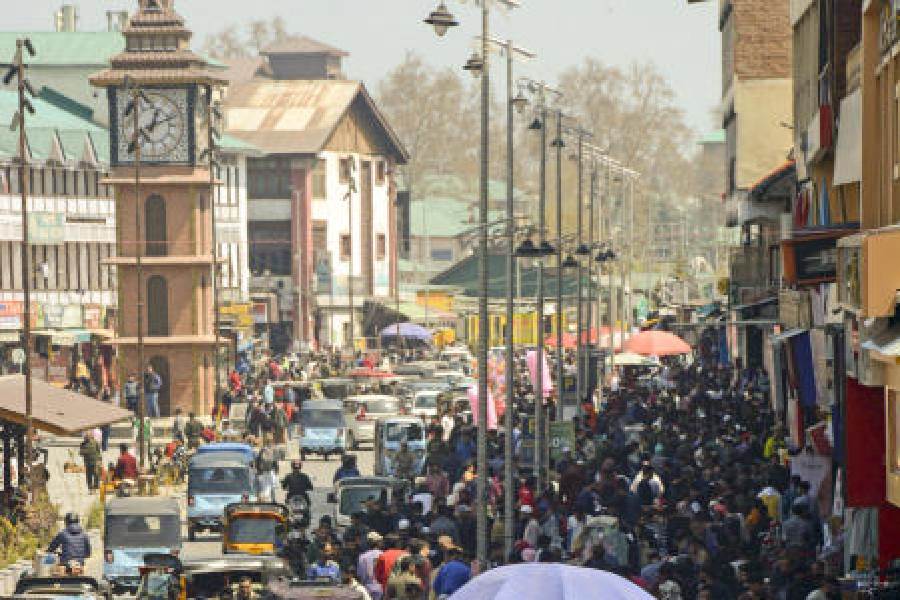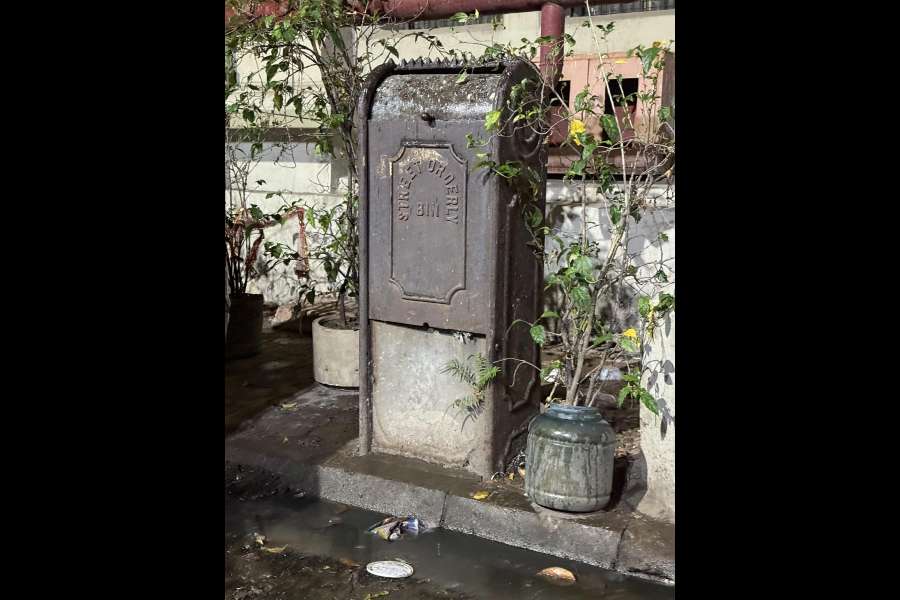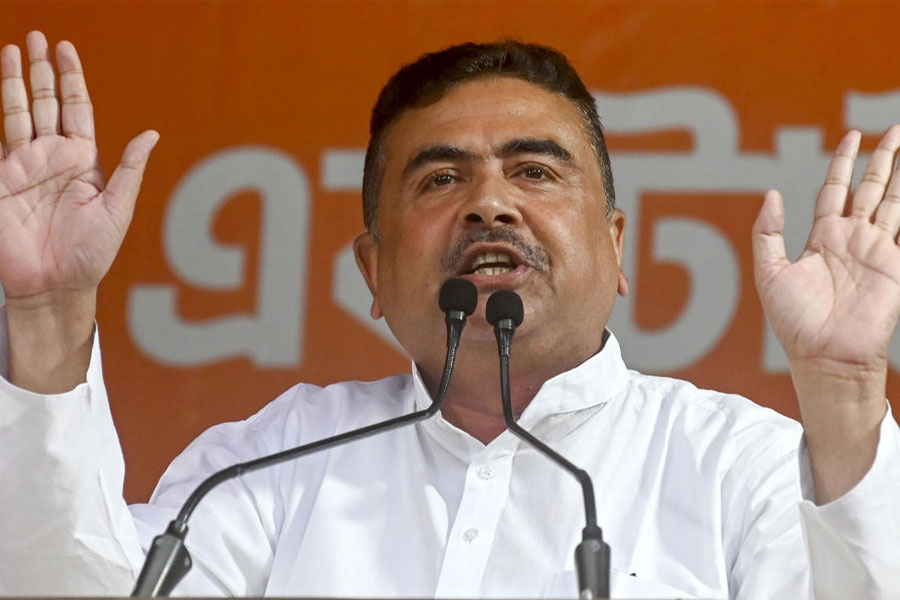 |
| Preparations are underway for the 400th edition of the Durga puja of the Sabarna Roy Chowdhury family in Barisha. In the foreground are the pillars of the cutchery where a deal with East India Company was inked. (Picture by Sudeshna Banerjee) |
Galileo had just discovered four moons of Jupiter. Henri IV, King of France, had been stabbed to death. Henry Hudson had set sail into what is now Hudson Bay. And Durga puja was born in what we now call Calcutta.
Away from the clamour over crowd count and contest crowns of community worship, Durga puja in town turns 400 this September.
The milestone will be reached in the atchala (eight-roofed) temple of the Sabarna Roy Chowdhury family in Barisha. But there will be no special celebration as the family believes in sticking to tradition.
The puja was instituted in 1610 by Laxmikanta Majumdar, the founder of the Sabarna Roy Chowdhury family, after getting the title and “eight tax-free parganas as jaygir” from Man Singh, Mughal emperor Jahangir’s general who lead the army to Bengal.
In those days, Barisha was an affluent village. “My ancestor was partial to the area. He also built a road connecting Barisha with Halisahar, via Kalighat. The British used to call it pilgrims’ road,” says Devarshi Roy Chowdhury, the president of Sabarna Roy Chowdhury Paribar Parishad.
Laxmikanta hailed from Halisahar and was posted in Jessore, till he returned to his birthplace Kalighat following differences with his employer, the ruler of Jessore, Pratapaditya. After his death, his two sons shifted from their ancestral seat to Nimta-Birati, near Dum Dum, for convenience of tax collection. That was in 1650. It was not till 1716 that the family moved from Nimta to Barisha.
The autumnal worship had started in Barisha as much at the initiative of Laxmikanta as his wife Bhagabati Devi. “The Mother Goddess was built on an ekchala frame and was accompanied by the other gods as her children, which was unique at that time,” says Devarshi.
The atchala temple is steeped in history. The pillars of the cutchery (land rent collection office) where East India Company’s Charles Eyre, son-in-law of Job Charnock, was handed over the right to collect rent in three villages — Kolikata, Sutanuti and Gobindapur — for an annual tax of Rs 1,244 on August 24, 1698, still stand. The area, awaiting a clean-up before Puja, leads to the atchala.
The atchala had a roof of hogla leaf, which was later tiled and now concretised. “We have been renovating the structure bit by bit,” says Ratikanto Roy Chowdhury, president of the atchala wing. The 85-year-old is the last son of the family to have collected taxes as a zamindar.
The family puja has proliferated over time as the descendants branched out, but the atchala puja has continued without interruption. “Today we have six pujas across Barisha and two more in Nimta and Birati, our original seats,” says Devarshi. “The other pujas were started to acquaint members of the new branches with our rituals,” he adds.
Though certain rituals may have been added by the other wings, the idol is identical. Shiva and Rama, in meditative poses, occupy two slots beside Laxmi and Saraswati respectively.
“It is said that our Kartik looks like a prince and not a warrior, being modelled on the Brahmin Laxmikanta,” smiles Devarshi, a scion of Barobari, which hosts the second oldest puja (since 1717). The atchala puja follows Tantric traditions, while in Barobari Vaishnava influences have crept in.
“In my childhood, all expenses, be it for banana leaves or sacrificial goats, came from zamindari accounts. Our subjects carried the idols during immersion,” recalls Ratikanto. Now the expenses are shared by the 200-odd family members staying in Barisha and beyond. “The subscription comes to about Rs 1,200 per earning member.”
Expenses swell because the puja is held over 16 days starting from Krishnanavami, this being one of the few families to have opted for the longest period permissible. Dinner is served on the three big nights to 250-300 members of the extended family. All visitors return with a bit of bhog.
This landmark year, the family is expecting more tourists during Puja. “But for us, frankly, the quatercentenary of our zamindari rights over the city in 2008 was a bigger affair,” says Devarshi.





